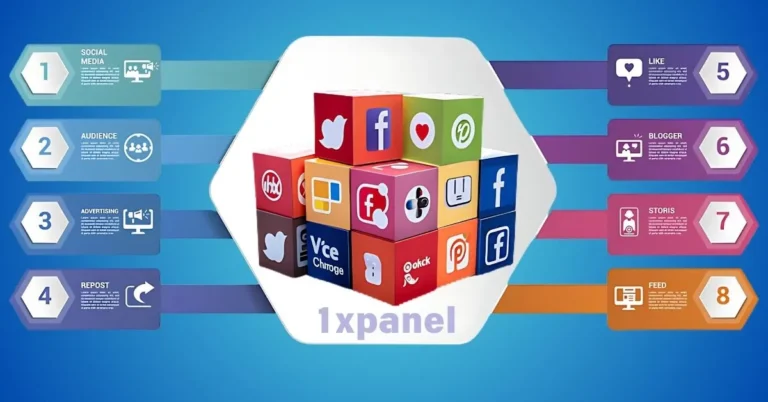The Ad Revolution: Unleash the Power of Digital Advertising Platforms
In today’s competitive marketplace, digital advertising platforms have transformed how businesses reach and engage their target audiences. Companies can create highly personalized and effective marketing campaigns by leveraging cutting-edge technologies and data-driven strategies. The revolutionary impacts of digital advertising marketing enable businesses to tap into this potential and significantly enhance their marketing efforts. This article delves deep into how digital advertising platforms are changing the game and offers insights on how you can maximize their potential for your business.
Whether you’re a small business owner looking to expand your digital footprint or a marketing professional aiming to fine-tune your strategies, understanding the nuances of digital advertising platforms is essential. These platforms not only provide enhanced reach but also offer valuable analytics to track and optimize performance. Modern digital marketing tools have made it possible to achieve levels of precision and engagement previously thought impossible.
The Rise of Digital Advertising Platforms
The advent of the internet revolutionized advertising, pushing traditional media like TV and print into the background in favor of digital channels. But what spurred the rise of digital advertising marketing? A key factor is a fundamental shift in consumer behavior. Previously, consumers primarily obtained news and entertainment from newspapers, television, and radio. Today, however, consumers spend much time online, engaging with social media, browsing websites, or streaming videos. This behavior change has created new opportunities for advertisers to reach consumers where they spend the most time, driving the transition to digital advertising platforms.
The growth of high-speed internet and mobile technology has further accelerated this trend. Now, consumers can access content on the go, making digital platforms even more critical. For more insights into the evolution of digital advertising, refer to this CNBC article. This piece highlights significant milestones and trends that have shaped the current landscape, providing an in-depth look at how we’ve arrived at this new era of advertising.
Types of Digital Advertising Platforms
Understanding the different types of digital advertising platforms is crucial for crafting an effective marketing strategy. Each platform offers unique advantages and capabilities that can be tailored to meet specific business goals:
- Search Engine Marketing (SEM) involves placing ads on search engine results pages (SERPs) through platforms like Google Ads. SEM relies on keywords relevant to the business, ensuring the ads appear when users search for related terms. This can dramatically improve visibility and attract highly targeted traffic to your site.
- Social Media Advertising: Platforms like Facebook, Instagram, and LinkedIn enable businesses to advertise directly on social networks. These platforms offer robust targeting options based on user demographics, interests, and behaviors, allowing for highly personalized ads. This strategy increases brand loyalty in addition to engagement.
- Display Advertising includes banner ads, rich media, and more placed on websites across the internet. It is known for its visual appeal and potential to capture user attention quickly. These ads can be placed on relevant websites or through ad networks that reach a broad audience.
- Video Advertising: Platforms like YouTube and TikTok offer options for video ads. Video content is incredibly engaging and has the power to convey complex messages effectively. With the rise of short-form video content, advertisers can create compelling narratives that resonate with their audience.
Read this Forbes report for a comprehensive breakdown of these platforms. It explores the diverse array of digital advertising options and provides valuable insights into how each type can be leveraged for maximum impact.
Benefits of Digital Advertising Platforms
Why should businesses invest in digital advertising platforms? Here are a few compelling benefits:
- Targeted Advertising: Digital platforms allow precise targeting based on demographics, interests, behavior, and more. This means that businesses can reach the exact audience they are interested in, leading to higher conversion rates and more efficient use of advertising budgets. Companies can deliver personalized messages that resonate more deeply with potential customers by focusing on specific user segments.
- Cost-Effective: Unlike traditional advertising methods, digital ads can be more affordable and offer better ROI. With options like pay-per-click (PPC) and cost-per-impression (CPM), businesses can choose a pricing model that aligns with their budget and goals. The ability to set daily or monthly limits on ad spend further ensures that marketing efforts remain within financial constraints.
- Real-Time Analytics: Businesses can track the performance of their campaigns in real time, allowing for quick adjustments and optimizations. Analytics tools provide insights into click-through rates (CTR), conversion rates, and user engagement levels. This data enables marketers to fine-tune their strategies and continually improve campaign effectiveness.
- Greater Engagement: Interactive ads and personalized content lead to higher engagement rates. Digital advertising platforms offer features like interactive polls, clickable banners, and video ads that encourage user participation. This increased engagement helps build a more active and loyal customer base, as users are more likely to interact with and remember brands that offer engaging experiences.
Challenges of Digital Advertising
While digital advertising platforms offer numerous benefits, they are not without challenges. Businesses must navigate issues like:
- Ad Blockers: Many users employ ad-blocking software, which can reduce the visibility of digital ads. This widespread use of ad blockers means that a significant portion of the potential audience may never see the ads. Businesses must find creative ways to circumvent this issue, such as focusing on non-intrusive ad formats or investing in native advertising that blends seamlessly with the content.
- Privacy Concerns: With growing concerns about data privacy, businesses must comply with regulations such as the General Data Protection Regulation (GDPR) and the California Consumer Privacy Act (CCPA). Ensuring compliance requires thoroughly understanding these regulations and implementing measures to protect user data. Failure to do so can result in hefty fines and damage the brand’s reputation.
- Market Saturation: With so many businesses advertising online, staying competitive can take time and effort. The digital ad space is crowded, making it challenging for any single ad to stand out. To overcome this, businesses must invest in high-quality creative content and continuously experiment with different strategies to find what works best.
Best Practices for Effective Digital Advertising
To make the most of digital advertising platforms, consider implementing the following best practices:
- Define Clear Objectives: Knowing what you want to achieve with your campaigns is crucial. Whether the goal is brand awareness, lead generation, or sales, having clear objectives helps guide strategy development and measure success effectively. A well-defined goal ensures that every campaign element is aligned with the desired outcome.
- Understand Your Audience: The more you know about your target audience, the better you can tailor your ads to meet their needs and preferences. Conduct thorough market research to gather insights about your audience’s demographics, interests, and online behaviours. This information can be used to create highly personalized and relevant ads that capture attention and drive engagement.
- Optimize for Mobile: With more consumers accessing the internet via mobile devices, ensure your ads are mobile-friendly. Mobile optimization involves designing ads that load quickly, fit well on smaller screens, and are easy to interact with. Given the increasing mobile internet usage, a mobile-first approach to ad design is essential for reaching a larger audience.
- Utilize A/B Testing: Experiment with different ad creatives, headlines, and targeting options to find the best. A/B testing involves running two versions of an ad simultaneously to see which one performs better. By comparing the results, marketers can identify what resonates most with their audience and refine their ads for better performance in future campaigns.
Conclusion
Digital advertising platforms have reshaped the marketing landscape by offering unparalleled targeting, cost-effectiveness, and real-time analytics. By understanding their benefits and challenges and following best practices, businesses can harness the power of these platforms to drive growth and achieve their marketing goals. The future of advertising lies in the evolution of digital platforms; those who adapt will be well-positioned for success.







